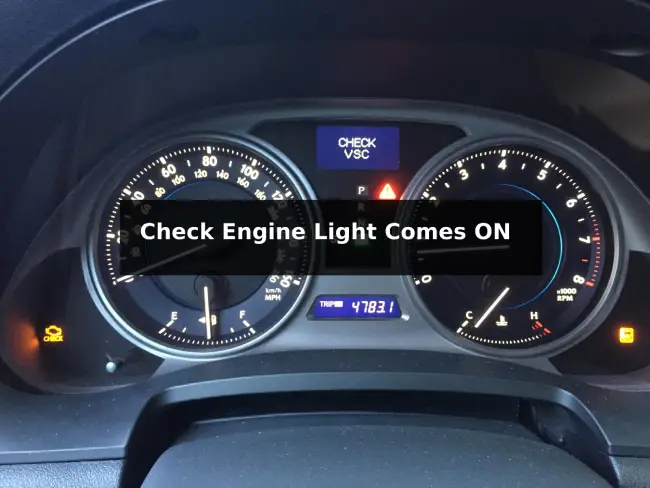Many car owners are tricked by mechanics into believing that removing the thermostat enhances engine cooling. Apart from that perception, are there any benefits of removing the thermostat from your car?
Removing a thermostat from your car does not come with any benefits. Contrary to what some people believe, doing it actually does more damage to your car than good. Cars are designed with a thermostat for a reason.
Your car engine is designed to operate within a specific temperature range. Read on to find out why you should never remove the thermostat from your car, regardless of the climatic conditions.
Is removing the car thermostat a good idea?

Removing a car thermostat is not a good idea and will never be. Car engines operate within a specific temperature range, usually between 195°F to 215°F. Removing the thermostat disrupts the usual engine temperature regulation sequence.
The consequence will be that the temperature rises above the limit or stays colder than the expected minimum. That depends on the ambient temperature and affects engine operation in different ways.
What does removing the thermostat do?
As mentioned, a thermostat regulates the engine temperature by opening and closing the constriction valve. It controls the coolant flow in and out of the engine. So, what are the impacts of removing it from your car? Consider the following possible consequences:
Overheating Problems
Most car owners believe removing a thermostat from their engines solves an overheating problem. That is caused by a popular misconception that a car without a thermostat runs cooler. It may be the case, but it depends on the ambient temperature. Also, if you are doing it to solve an overheating problem, you may be disappointed.
Removing a thermostat from your car means coolant can now flow in and out of the engine faster than it should. The fluid has less time to absorb heat from the engine block, which makes the overheating problem worse.
Instead of removing the thermostat, find the real cause of the overheating problem and fix it. It is usually a misdiagnosis to think that thermostat is the issue. This component can never cause your car’s engine to overheat if functioning well.
Related content: Car Is Slow to Start, but Battery Is Fine – (Here are 7 Causes)
Poor Fuel Economy
The engine control module relies on the data from the engine temperature sensor and the intake ambient temperature sensor to determine the air-fuel mixture ratio. If you remove the thermostat, the engine will not achieve the recommended minimum operating temperature. That incident prompts the ECU to provide a richer fuel mixture to try to correct that.
The consequences of a richer air-fuel mixture include low mileage per gallon, more carbon buildup, and premature failure of the catalytic converter. You can avoid these unnecessary costly repairs by leaving a thermostat in the car the way the car manufacturer designed it.
Reduces Lifespan of The Engine
Removing a thermostat may make the engine run colder than the recommended temperature value. That causes more wear and tear on the engine parts. The car’s engine also performs a closed loop procedure if its temperature is not within the specified range. If the engine temperature does not increase on time, the engine chokes and finally stops.
Inefficient Air Conditioning System
The heat the car uses to warm the interior during winter comes from the engine coolant. Since the coolant temperature may fail to rise to the operational value without a thermostat, your car may take a while to warm up or completely stop working. You will have the worst experience during the cold season when the air conditioning system, heated seats, and steering wheel do not behave as expected.
Related content: Why Does My Car Not Start When the AC Is ON?
Check Engine Light Comes On

The engine control modules in modern vehicles monitor the time it takes for the engine to reach the operating temperature. It uses data from the engine coolant temperature sensor, intake ambient temperature sensor, and the engine’s reported RPM. The diagnostic trouble code P0128 is set if the engine coolant temperature sensor fails to give the operating temperature within a specified time. And that turns the check engine light on.
What Is the Purpose of a Thermostat in A Car?
A thermostat helps to maintain the engine temperature by closing and opening a valve. It controls the coolant flow in and out of the engine. When the engine temperature is low, the thermostat closes the valve to contain coolant within the engine block. That helps your car’s engine to achieve working temperature much quicker.
Once the operating temperature is achieved, the thermostat opens the valve to allow hot coolant from the engine to flow into the radiator for cooling and cold one into the engine block. It also gives the coolant in the engine enough time to absorb heat. The car’s thermostat will continue this operation of closing and opening the valve as long as the engine is running.
Related content: Can I Drive With a Cracked Radiator?
Is It OK To Run an Engine Without a Thermostat?
No, it is not recommended to run an engine without a thermostat. That is because it is a vital component of the engine cooling system. Removing it will disrupt the usual cooling sequence that ensures the engine achieves operating temperature quickly and stays within the recommended temperature range.
What Is the Disadvantage of Removing a Thermostat from A Car?
Removing a thermostat does not come with any benefits. In fact, it is a bad idea to even think of doing it. All it brings are negatives that affect your car’s performance in many ways. In summary, removing a thermostat from your vehicle has the following disadvantages:
- Poor fuel economy
- Premature catalytic converter failure
- Shorter engine’s lifespan
- Delayed or disrupted interior warming
- Escalated overheating problems
- Excessive carbon buildup
Lastly, never think of removing a thermostat from your car even if you suspect it causes overheating of the engine. Take your vehicle to an auto repair shop or call an experienced mechanic to diagnose and fix the problem. If the thermostat is faulty, replace it with the right part for your vehicle model. However, thermostats rarely develop faults and may last the entire lifespan of your car.
Related content: Can You Drive a Car With a Coolant Leak? Answered
FAQ
I hope this article answered most of your questions regarding your car’s thermostat. However, there might be more questions that you still don’t have an answer to. This section will address some of the more frequently asked questions in regard to a vehicle’s thermostat.
Will removing the thermostat stop overheating?
Removing your thermostat will not prevent your car from overheating. Even if the thermostat is stuck closed, removing it won’t fix the problem. The engine might take longer to overheat, but as long as the root problem exists, removing the thermostat won’t fix it.
How long can you drive without a thermostat?
Driving without a thermostat is never a good idea, as this can result in severe engine damage. There is no exact answer on how long you might be able to drive without a thermostat, as it will depend on the car, outside temperature, and other factors.
However, if you find yourself in a situation where driving without a thermostat is inevitable, you should keep an eye on the water temperature. Depending on how your car will react, you might be able to drive for a longer time. One possibility is that your engine will start overheating, meaning that you can only drive for a couple of minutes before needing to wait for the engine to cool down.
The second possibility is that your engine will never reach the optimum operating temperature, allowing you to drive a longer distance. Regardless of which situation you find yourself in, you should avoid driving in this condition at all costs.
Can you run a diesel without a thermostat?
For some reason, there are people who think that a diesel engine might be able to perform better without a thermostat. This is just a myth, as regardless of fuel type, your vehicle’s engine will function on the same principle. So, the same answer applies for diesel engines too.
My name is Jeffrey Williams and I have been a car mechanic for over 35 years. I am currently working NYC Auto Repair Shop, in New York City and recently developed a strong passion about blogging. I decided to put together this blog where I will try and answer the most commonly asked questions I get on a daily basis from my customers.








